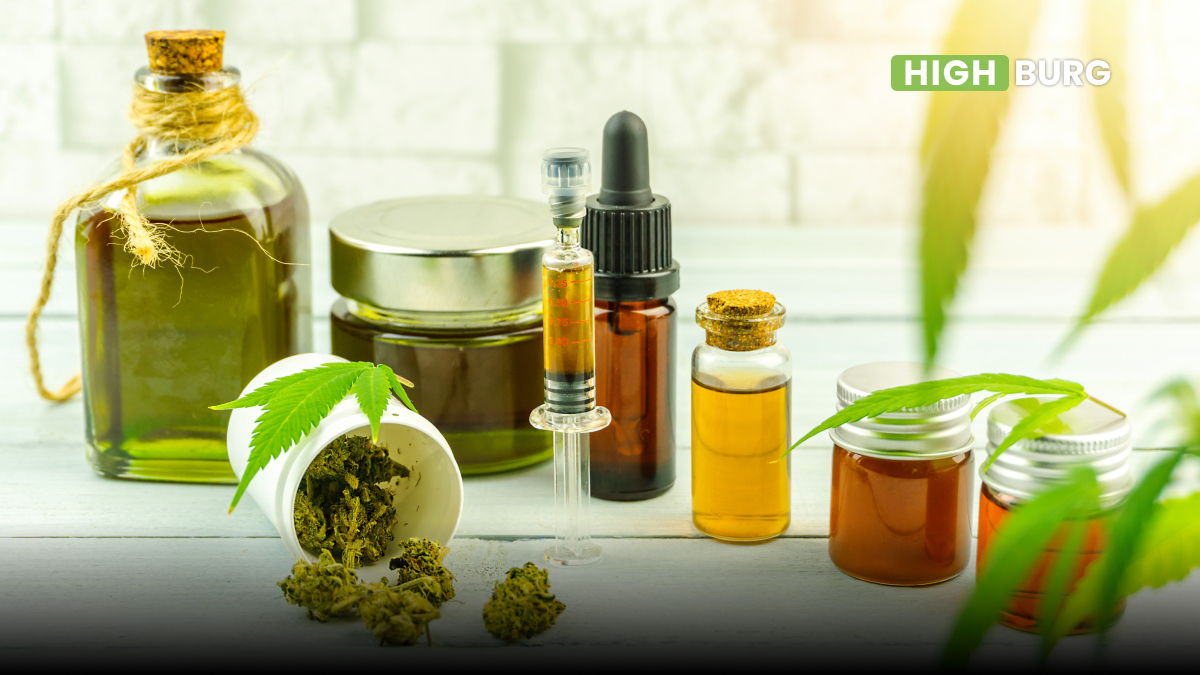When we talk about the basics of cannabis extraction, we’re looking at the intersection between science and culinary artistry. Cannabis extraction is a process that involves extracting the most desirable compounds from the cannabis plant, like a magician pulling a rabbit out of a hat, except the rabbit is a cannabinoid and the hat is a leafy green plant.
This process is not just interesting, but also crucial to the creation of a variety of products. From concentrates that pack a punch to oils that are perfect for microdosing, cannabis extraction opens up a whole new realm of possibilities for cannabis consumers.
What is Cannabis Extraction?
Cannabis extraction is like a VIP party for different cannabinoids and terpenes. It’s where the most sought-after compounds, like tetrahydrocannabinol (THC) extracts, get to shine, free from the crowd of other plant matter. These concentrated extracts, commonly known as dabs, are like the rocket fuel of cannabis. Extracts are potent and designed to take you further than regular cannabis flowers.
Extraction isn’t just about potency, though. It’s also about flavor, aroma, and the overall experience. Through proper cannabis extraction, we can isolate and preserve the unique profile of each strain, capturing its essence in a form that’s ready to be dabbed, vaped, or added to edibles.
Cannabis Extraction Methods
There are many different methods for cannabis extraction. Different methods lead to different products. It’s like choosing between making a cake, a pie, or cookies. Each method will give you a different result, whether it’s shatter, wax, budder, oil or an isolate and each one has its unique characteristics.
The choice of method can depend on many factors, from the desired outcome to the equipment available. It’s like being a chef deciding whether to bake, fry, or grill. Each extraction technique brings something different to the table.
Alcohol Extraction
Alcohol extracts are the old faithful of cannabis extraction. It’s like making a cup of tea. You steep the plant material in alcohol, then remove the leaves and evaporate the alcohol. Simple, right? Well, just like over-steeping your tea can lead to bitter flavors, this method can also extract unwanted compounds, resulting in a less pure product. Despite its simplicity, alcohol extraction has stood the test of time. It’s a testament to the fact that sometimes, the simplest methods can be the most effective. However, if you’re after a more refined product, other methods might be more up your alley.
CO2 Extraction
CO2 extraction is the high-tech whizz kid of cannabis extraction methods. It uses carbon dioxide under high pressure and in a particular range of temperatures to reach the supercriticalCO2 state and to create extracts that are clean, high-quality, and safe. Some extractors say it can be like using a state-of-the-art espresso machine to make your morning coffee instead of a simple French press. This can also be an issue for some extractors. Just like that fancy espresso machine, CO2 extraction requires expensive, specialized equipment. It’s a significant investment, but for those who prioritize quality and safety, it’s often seen as worth it.
Butane Extraction
Butane extraction, or creating BHO (Butane Hash Oil), is like the daredevil stunt of cannabis extraction. It involves using butane as a solvent to extract cannabinoids and terpenes. The result can be a highly potent extract. At the same time, this method carries risks. Just like performing a daredevil stunt, it can lead to explosions if not done correctly. Plus, there’s the potential for traces of harmful solvents to remain in the final product, much like the risk of burning your coffee beans if you roast them too long.
Propane Extraction
Propane extraction is like the slightly cooler younger sibling of butane extraction. With a lower boiling point, propane allows for better preservation of certain terpenes, providing a more flavorful extract. It’s similar to using fresh herbs in your cooking instead of dried ones, the flavor just pops more. Like its sibling, however, propane extraction requires careful handling. It’s not quite as dangerous as juggling knives, but it’s definitely not as safe as juggling apples.
Solventless Extraction
Solventless extraction techniques, like making freshly pressed rosin, are the gentle giants of cannabis extraction methods. They use heat and pressure to squeeze out the desired compounds, without the use of potentially harmful solvents. It can be equated to making fresh-squeezed orange juice, nothing but pure, natural goodness. This method is more labor-intensive and yields less product than solvent-based methods. Although it takes more effort, many believe the end product is worth it.
Cannabis extraction gives you access to the most potent and flavorful elements of the cannabis plant, perfect for dabbing and other forms of concentrate consumption. Each extraction method has its pros and cons, but all play a starring role in the diversity of cannabis extracts.
As the cannabis industry continues to evolve, so too will the methods of extraction. Extractors are always looking for ways to fine-tune their processes and improve the products they yield. As fans of cannabis extracts, we can all expect the future of extraction to look quite golden!
